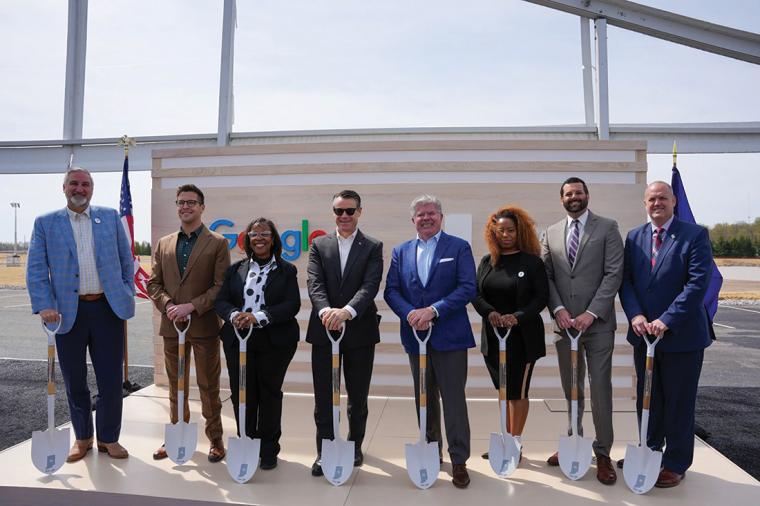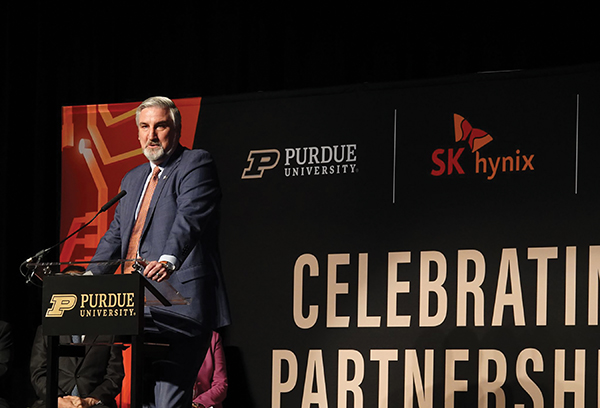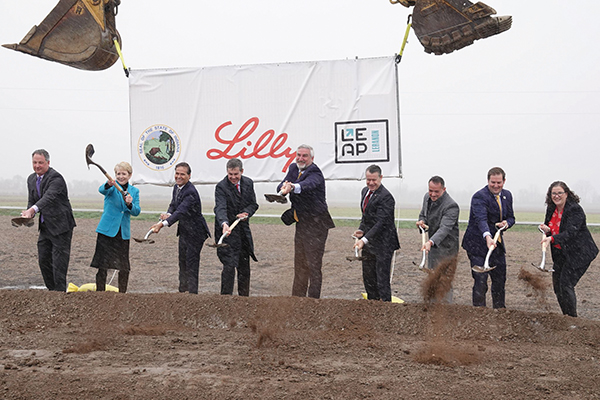
Future-focused policies, technological investments and global engagement are driving the next industrial revolution in Indiana.
Indiana has long been known for its manufacturing prowess, boasting the highest concentration of manufacturing jobs in the nation. Today’s manufacturing isn’t what typically comes to mind for most though – it looks, sounds and even smells different than the machine-based assembly lines that once brought cars to streets across the U.S.
This generational shift is perhaps more evident in Indiana than anywhere else, where manufacturing accounts for 25 percent of the state’s GDP. Manufacturers of all shapes and sizes are operating smart factories and leveraging advanced technologies such as robotics, data analytics, AI and machine learning, the internet of things and machine vision to increase efficiency and product quality, to make essential technologies more accessible and more secure, to reduce the nation’s global carbon footprint with sustainable solutions, and to develop life-changing and life-saving solutions.
In Indiana, in what was once known as the “Rust Belt,” technological advancement and innovation have never been more alive, powering the next industrial revolution and changing the ways we see, touch and experience the world around us.
Powering Production and Revitalizing Communities

These advancements can be seen across Indiana’s vast manufacturing ecosystem – from aviation and space exploration to agbiosciences and life sciences – where investments are driving community growth, new patents are soaring and a $1 billion venture capital market is inspiring entrepreneurs and bringing new ideas to market.
It is perhaps most evident in three of the state’s newest and fastest-growing sectors: energy storage and generation, electric vehicles and microelectronics, which alone have generated more than $21 billion in committed capital investment for Indiana in just the past few years. These investments are not only poised to transform the state’s economy, workforce and communities, but they sit squarely at the center of critical U.S. and global economic priorities, catapulting Indiana to the forefront of efforts to solve tomorrow’s challenges.
In industrial-heavy northwest Indiana, Doral Renewables is ushering in a $1.5 billion solar farm investment across 13,000 acres, powering the state to a recent number four ranking for new clean energy under development. The project will bring 1.3 gigawatts of clean energy to the region and, once complete, is set to be the largest solar farm in the country.
In Kokomo, which was once the epicenter of automotive industry layoffs, Stellantis and Samsung SDI are leading an economic revival. The companies’ joint venture is investing more than $6.3 billion to co-locate two StarPlus Energy battery manufacturing facilities in the community, creating 2,800 new, in-demand jobs and attracting suppliers across the region.
In Odon, Indiana, a rural community poised for growth near the Naval Surface Warfare Center, Crane Division, a new microelectronics campus focused on advancing semiconductor R&D and production while increasing national security, is bringing high-skilled jobs to the region. The public-private development, called WestGate One, has already attracted four semiconductor companies to the state, bringing more than $300 million of investment to the region.
Playing to Win
This surge of investment and advancements in Indiana’s manufacturing industry isn’t happenstance. The state has been boldly laying the groundwork, making a series of strategic and calculated decisions to power the industry forward.
Under the leadership of Governor Eric J. Holcomb, Indiana has made significant modernizations to the state’s economic development toolkit, eliminating red tape, creating new incentives like a deal closing fund and bringing new sites to market to better attract critical industry investments and help companies get up and running even faster.
Those efforts have paid off. Just this spring, Eli Lilly and Company Chair and CEO Dave Ricks announced plans to invest an additional $5.3 million at its LEAP Innovation and Research District facilities – a new megasite developed by the Indiana Economic Development Corporation – bringing the company’s total site investment to $9 billion. Ricks pointed to the state’s renewed embrace of large-scale projects as a key factor in the decision, highlighting that today’s businesses demand speed – a currency Indiana understands.
The state’s expanded toolkit also helped land a highly competitive $3.87 billion investment from SK hynix, announced in April, which is set to bring a new advanced packaging fabrication and R&D facility for microelectronic products and applications to Indiana. The once-in-a-generation investment is expected to drive innovation and fill a critical gap in the nation’s semiconductor supply chain.
Moreover, the state’s focus on aligning its offers directly to the needs of today’s businesses has attracted significant attention from cloud computing and storage providers. In 2024 alone, AWS, Google, Meta and Microsoft all announced plans to establish new data centers in Indiana, investing nearly $15 billion and expanding critical infrastructure for customers in manufacturing and beyond to power continued growth in technology and artificial intelligence.
Future Proofing the State’s Manufacturing Sector

Indiana has attracted an unprecedented number of megaprojects in recent years, but leaders aren’t focused solely on those headline-making deals. The state has nearly tripled its investment in entrepreneurship, rolling out new programs, resources and venture funds and catapulting Indiana to number two on Forbes’ list of best places to start a business.
In 2020, the state launched a new initiative specifically designed to futureproof its manufacturing sector by encouraging businesses – particularly small and medium-sized businesses, legacy manufacturers and rural businesses – to invest in new technologies. Since then, Indiana has awarded $56.9 million in Manufacturing Readiness Grants to 465 companies, yielding a combined $812.7 million invested in smart technologies and processes.
While some may have concerns that increased technology will negatively impact jobs, Indiana’s Manufacturing Readiness Grant program has found the opposite. Preliminary studies show that participating companies that adopted smart manufacturing technologies added five new positions and $196,000 of payroll on average per project while also projecting a $2.5 million average revenue impact, reaffirming that technology and career opportunities can indeed live side-by-side rather than in conflict.
Collaborating Over Competing
Global engagement has been a centerpiece of Governor Holcomb’s agenda since taking office in 2017, determined to collaborate with partners across the world rather than compete. Under his leadership, the Indiana Economic Development Corporation (IEDC) has broadened its international reach and global partnerships, working across borders, across oceans and across party lines to increase mutually beneficial innovation, investment and trade.
Indiana’s foreign direct investment has grown significantly, particularly in the manufacturing sector, where new partnerships with the South Korean industry – and a new business development office in Seoul – has led to growth in electric vehicles and semiconductors alike. In 2023, international owned businesses made plans to invest $20.49 billion to locate or grow in Indiana – a 182 percent increase from 2022 – accounting for 71 percent of the total capital investment committed to the state that year.
Indiana recently hosted its second Global Economic Summit, convening its global partners, including more than 40 diplomatic delegations representing 31 countries and territories, in Indianapolis. The event served as an opportunity to make new connections and foster critical relationships to align strategic initiatives, share best practices and advance innovation in industry-driven programs focused on forwarding the global economy and serving all residents in Indiana and beyond.
An Intentional Economy
Indiana’s surge of manufacturing activity and innovation is just one result of the state’s proactive and comprehensive approach to economic development. After decades spent cultivating a predictable, low-tax, pro-growth business climate, the state is well positioned to make unprecedented investments in its future by allocating new resources to economic development incentives, entrepreneurship, talent and quality of place.
Indiana has set out to build a high-growth, high-tech economy of the future – one that attracts today’s leaders, inspires tomorrow’s talent and builds vibrant and sustainable communities – and the early results are indisputable. Learn more about Indiana’s bold strategy and join a winning state at iedc.in.gov. T&ID

